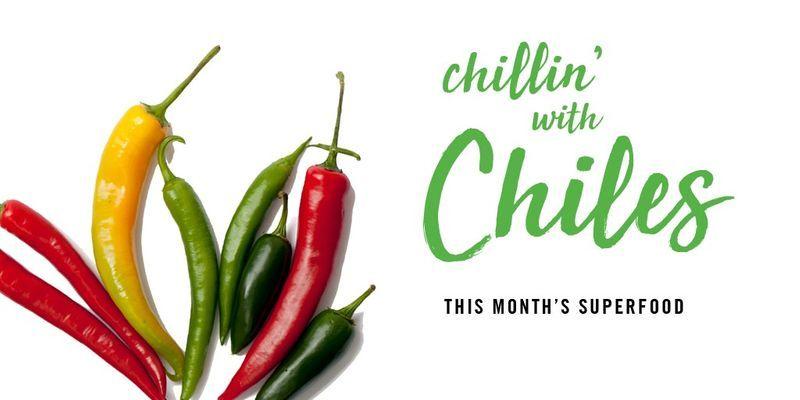Feeling bland lately? Craving a little extra flavor in your life? Say no more. This month’s Superfood, the chili pepper, carries major nutrients as well as a kick.
Native to South and Central America, these peppers come in all shapes, sizes, colors and varying levels of spice. You can enjoy them fresh or dried, as well as in various sauces such as curry or barbecue.
Chili peppers are notorious for their heat, but the small fruits also provide loads of health benefits. Not only are they a great source of Vitamin A, Vitamin K, potassium and copper — they even carry more Vitamin C than an orange. Eating a chili-rich diet improves cognitive function, reduces blood pressure, boosts immunity and helps prevent cardiovascular disease.
You can find chili peppers at Campus Market, Village Market and other recipes across campus. Be sure to choose peppers with firm, shiny skin, and a heat level your tastebuds can handle.
The heat carried by a chili pepper is actually its way of defending itself from harmful fungi. The secret weapon is capsaicin, the substance that gives a pepper its intensity. As insects poke holes in a chili’s skin, the pepper’s capsaicin will slow the growth of any fungi that will try to grow in place. So, the more bugs there are in a given area, the hotter the chilis.
Chili peppers’ spicy flavor also protects them from predators, since only mammals are sensitive to it. When you bite into a chili pepper, capsaicin binds with pain receptors in your mouth and throat, which can cause discomfort. Birds, however, are completely immune to the effects — making them responsible for spreading wild pepper seeds after they eat and excrete them.
The Scoville Scale, named after pharmacist Wilbur Scoville, was designed to rank different peppers’ heat levels. A bell pepper ranks at 1–100 SHU (Scoville Heat Units), while the Carolina Reaper — the hottest pepper currently recorded — ranks at 2.2 million SHU, according to the Guinness Book of World Records.
Whether you’re a die-hard fan of spicy food or looking for something on the mild side, there are many ways to sneak the nutrient-rich chili into your diet. Slice up some chili peppers to power sandwiches or omelets, sauté them in a veggie stir fry, or douse whatever food sits in front of you in hot sauce. However, make sure to avoid sauces with too much sugar and sodium.

